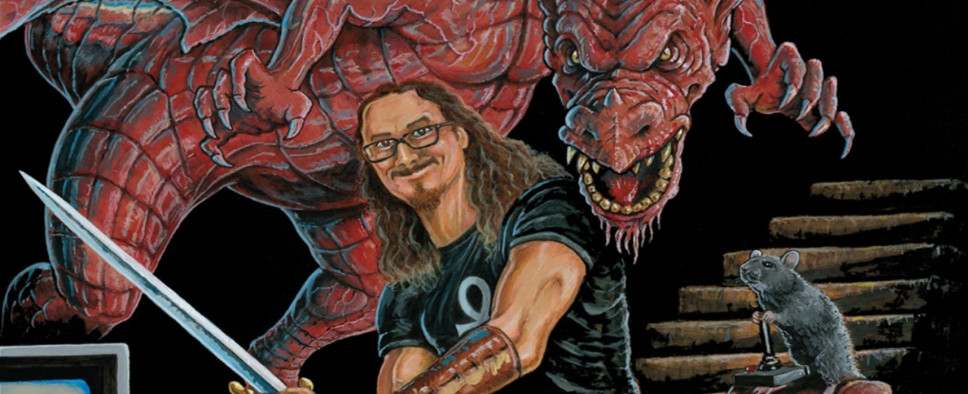Dungeons & Desktops: The History of Computer Role-Playing Games - Second Edition Review
-
Category: ReviewsHits: 16303

Article Index
Introduction
Most RPG enthusiasts have heard of Rogue, the procedurally-generated RPG that kicked off the aptly named “roguelike” subgenre. They could also probably pick Richard Garriott's Akalabeth: World of Doom from a line-up whenever asked about the first commercial RPG.
If, however, you're someone who would like to have a deeper understanding of computer role-playing games, or CRPGs for short, then you may be interested in “Dungeons & Desktops: The History of Computer Role-Playing Games – Second Edition,” a book authored by Matt Barton and Shane Stacks.
You can pick Dungeons & Desktops up from Amazon. It comes in a variety of editions and runs for over 600 pages. Over the course of its 23 chapters, it will tell you all about the history of CRPGs going as far back as the 1970s, with some brief mentions of the genre's early progenitors.
With such an ambitious scope, it's nice to know that the book's authors aren't just a couple of nobodies trawling Wikipedia for references, but could instead be classified as RPG scholars.
You may recognize Matt Barton from his Matt Chat show where he regularly interviews prominent, and some may say legendary, video game developers. He's also a professor of English at St. Cloud State University, which is a perfect background for someone looking to write a deep and informative non-fiction book. And while Shane Stacks can't boast a university career, he does have his own weekly Shane Plays Geek Talk radio show where he covers various geek-related topics, and oftentimes this includes detailed interviews with CRPG developers.
These personal interactions with the people who worked on the games discussed in the book give its authors plenty of unique insights into the CRPG branch of the video game industry and supply them with a bounty of exclusive quotes.
You may be wondering, however, why should you even think about buying Dungeons & Desktops when you can get Felipe Pepe's “CRPG Book” for free.
While Felipe's book serves as a love letter to the CRPG genre - this eclectic collection of reviews provided by enthusiasts from all over the world - Dungeons & Desktops can be seen as more of an educational tool that can be useful to both the newcomers to the genre and the veterans looking to fill in some blanks here and there. It puts a spotlight on the most influential CRPGs and their developers, while tracing the genre's evolution across a multitude of decades.
With that in mind, I personally think that a book such as this can definitely be worth your money and attention. But is this particular literary specimen good enough to warrant a purchase? Let's find out.
You Must Study the Past Before Venturing Forth
Let's start with the obvious. This book is positioned as the second edition of the Dungeons & Desktops book Matt published back in 2008. However, from my understanding, it has enough unique content to be considered its own thing.
First of all, a lot has happened in the CRPG scene since 2008. The genre went from something no one but the most die-hard enthusiasts wanted to touch with a ten foot pole to an ubiquitous phenomenon permeating the entirety of the video game industry. Progression systems and skill trees can be found in most action games these days, playing pen and paper RPGs is somehow seen as a cool thing to do, and the so-called Kickstarter Renaissance has managed to rekindle a lot of interest in old-school CRPGs.
The second edition of Dungeons & Desktops reflects this by adding a number of new chapters that paint the genre's future in a much more optimistic light than the original edition did back in 2008. But on top of that, the second edition offers plenty of new full-color screenshots and direct developer quotes that help better frame the overall picture. It also reorganizes the book's contents and introduces frequent humorous interjections from the authors that serve as a welcome light-hearted contrast to the book's usual dry and academic tone. It also features a preface penned by the one and only Chris Avellone, and a very relatable one at that.
The book starts by attempting the impossible. It tries to define what a CRPG is exactly. After that, the book looks at the genre's tabletop origins going as far back as the 19th century Prussia and its various wargames. It also credits J.R.R. Tolkien with a lot of influence over the genre. And while undoubtedly influential, Tolkien's role is perhaps a bit overstated.
It's fairly obvious that a lot of early CRPGs owe a great deal to Dungeons & Dragons, and there's plenty of Tolkien influences in that, but if one was to read the original Dungeon Master's Guide, and its Appendix N in particular, they would discover a number of other authors listed as “inspirational and educational reading.”
Perhaps the early CRPG developers borrowed the elements introduced by those authors from D&D, or maybe they went straight to the source, but the fact remains that some of the most well-established CRPG tropes can be traced back to those other Appendix N stories.

